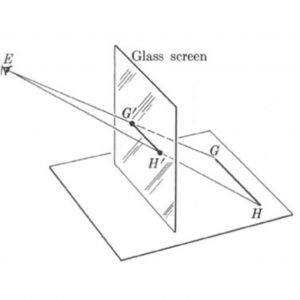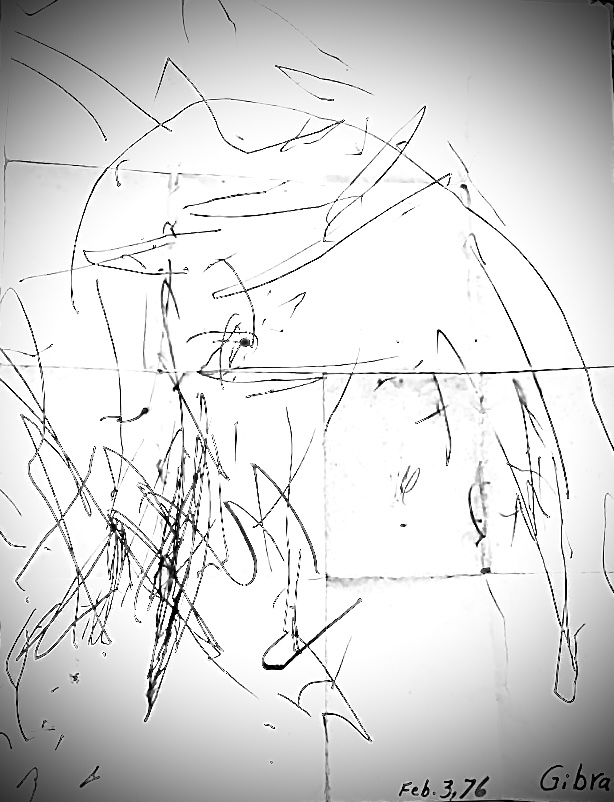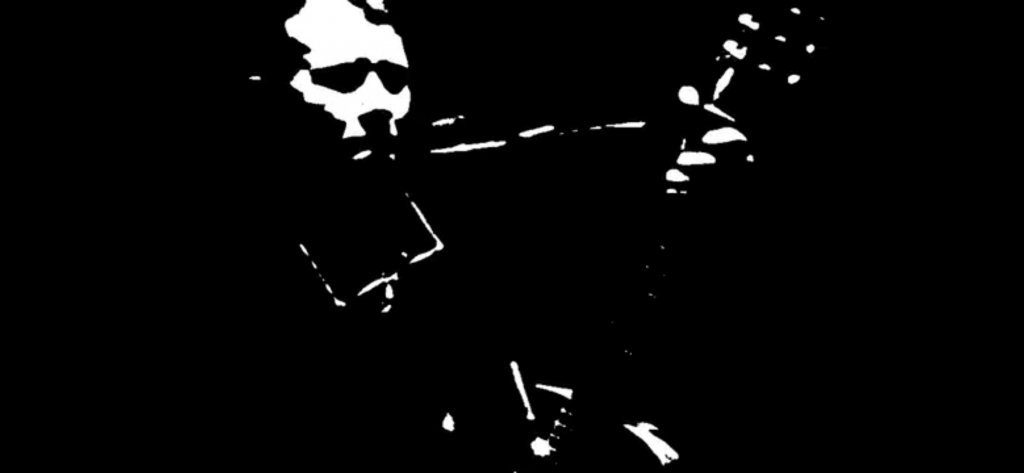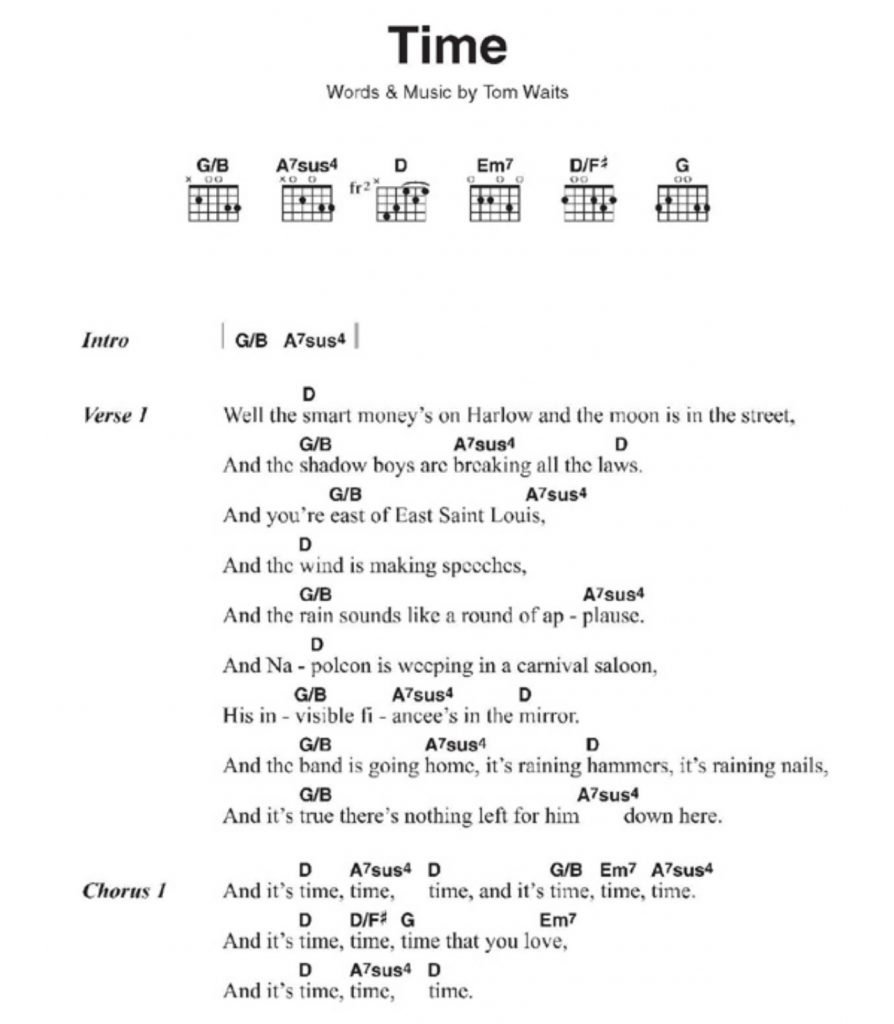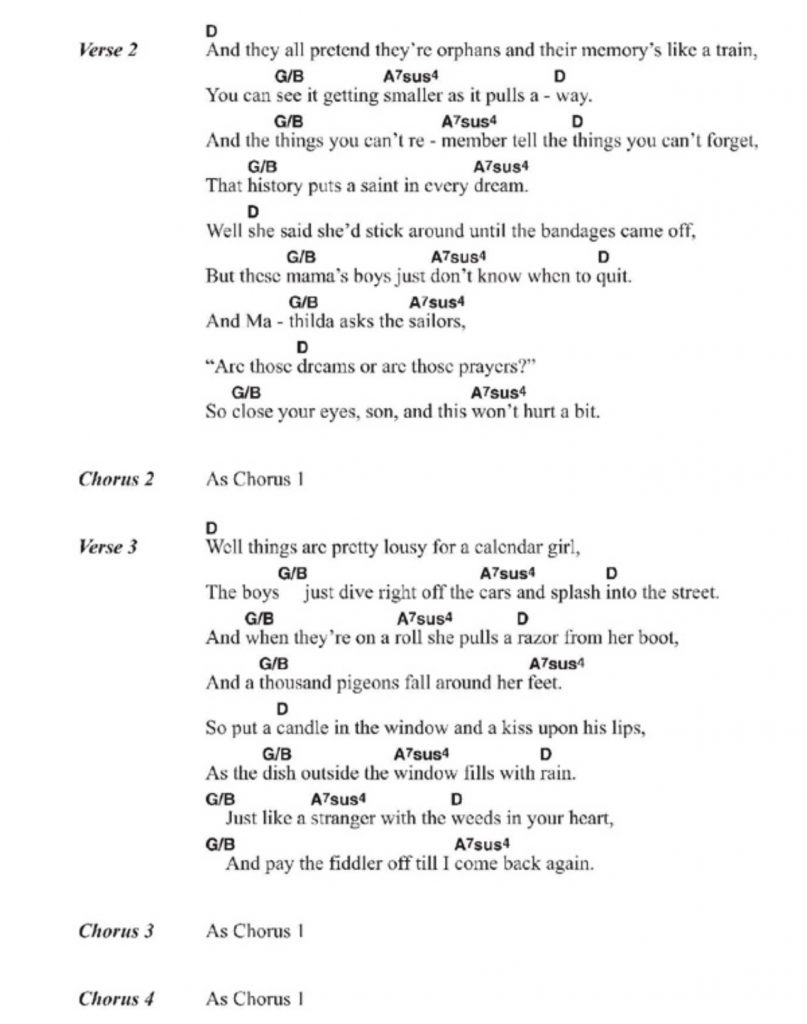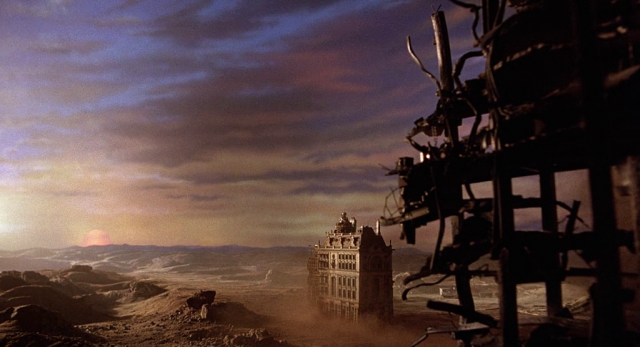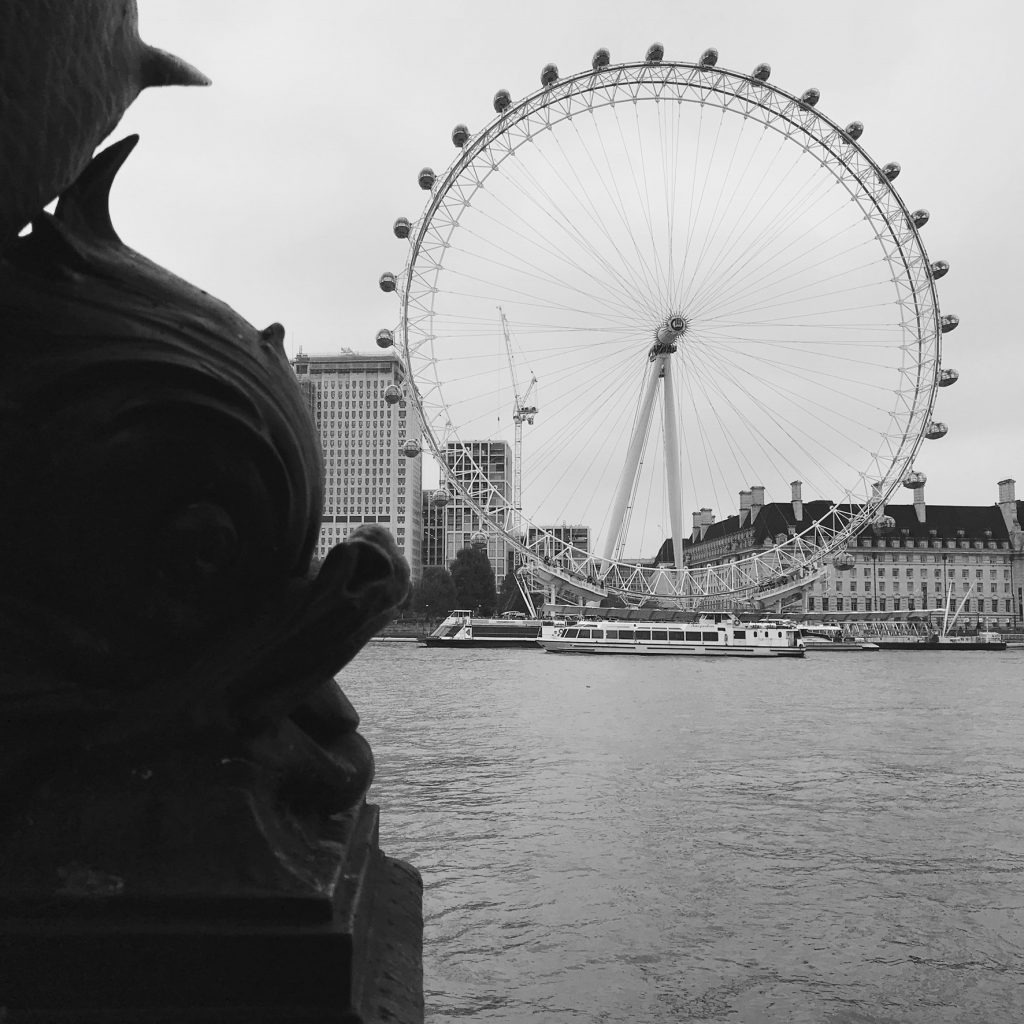Let us accept, then, the principle that the canvas must contain the same section that a glass screen placed between the eye of the painter and the actual scene would contain. Since the artist cannot look through his canvas at the actual scene and may even be painting an imaginary scene, he must have theorems which tell him how to place his objects on the canvas so that the painting will, in effect, contain the section made by a glass screen.
Suppose then that the eye at E (Fig. 10–8) looks at the horizontal line GH and that GH is parallel to a vertical glass screen. The lines from E to the points of GH lie in one plane, namely the plane determined by the point E and the line GH, for a point and a line determine a plane. This plane will cut the screen in a line, G′H′, because two planes which meet at all meet in a line. It is apparent that the line G′H′ must also be horizontal, but we can prove this fact and so be certain. We can imagine a vertical plane through GH. Since GH is parallel to the screen and the latter is also vertical, the two planes must be parallel. The plane determined by E and GH cuts these parallel planes, and a plane which intersects two parallel planes intersects them in parallel lines. Hence G′H′ is parallel to GH, and since GH is horizontal, so is G′H′. But GH was any horizontal line parallel to the screen. Hence the image on the screen of any horizontal line parallel to the screen or picture plane must be horizontal. Thus in a painting which is to contain what this glass screen contains, the line G′H′ must be drawn horizontally.
We can present practically the same argument to show that the image of any vertical line, which is automatically parallel to the vertical screen, must appear on the screen as a vertical line. Thus all vertical lines must be drawn vertically. Continue reading “SOME MATHEMATICAL THEOREMS ON PERSPECTIVE DRAWING”

